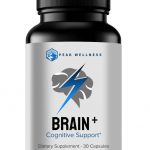Drive Social Media: Effective Social Media Marketing Strategy
In the fast-paced world of digital marketing, a robust social media strategy is essential for brands to connect with their audience, build relationships, and drive sales. At Drive Social Media, we specialize in crafting personalized strategies that elevate your brand’s presence across platforms. Here’s a comprehensive guide on how to create an effective social media marketing strategy.
1. Define Your Goals
The foundation of any successful strategy is clear, measurable goals. What do you want to achieve with your social media efforts? Common objectives include:
- Increasing brand awareness
- Driving traffic to your website
- Generating new leads
- Boosting engagement with your audience
- Increasing sales or conversions
- Improving customer retention and loyalty
Your goals will shape your strategy and help measure your success.
2. Know Your Audience
Understanding your audience is crucial. Conduct thorough research to determine who your target audience is. Consider factors such as:
- Demographics (age, gender, location, etc.)
- Psychographics (interests, behaviors, values)
- Social media habits (preferred platforms, engagement patterns)
Creating detailed buyer personas can help tailor your content to meet the specific needs and preferences of your audience.
3. Choose the Right Platforms
Not all social media platforms are created equal. Select the ones that align with your business goals and audience. For instance:
- Facebook: Great for broad reach and community building
- Instagram: Ideal for visual storytelling and younger audiences
- LinkedIn: Best for B2B marketing and professional networking
- Twitter: Effective for real-time updates and customer service
- TikTok: Popular among Gen Z for short-form, creative content
Focus your efforts on the platforms that offer the most potential for your brand.
4. Create Engaging Content
Content is king in social media marketing. Develop a content plan that includes a mix of:
- Informative posts (blog articles, how-tos)
- Entertaining content (memes, videos)
- Interactive elements (polls, Q&A sessions)
- User-generated content (customer reviews, testimonials)
- Promotional materials (discounts, product launches)
Visuals, such as images and videos, tend to perform better and capture more attention than text-only posts. Make sure your content is high-quality and aligns with your brand’s voice and style.
5. Develop a Content Calendar
A content calendar helps you plan and organize your posts in advance. It ensures consistent posting, which is key to maintaining engagement. Include:
- Post dates and times
- Content topics and themes
- Platform-specific details
- Relevant hashtags and keywords
Regularly update your calendar to reflect any changes in your strategy or industry trends.
6. Engage with Your Audience
Social media is a two-way street. Engage with your followers by:
- Responding to comments and messages promptly
- Encouraging discussions and feedback
- Running contests and giveaways
- Sharing user-generated content
Active engagement helps build a loyal community and strengthens your brand’s relationship with its audience.
7. Analyze and Adjust
Regularly review your social media performance using analytics tools provided by each platform. Key metrics to monitor include:
- Reach and impressions
- Engagement rate (likes, comments, shares)
- Click-through rate (CTR)
- Conversion rate
- Follower growth
Analyze this data to understand what’s working and what’s not. Use these insights to refine your strategy and improve your results.
8. Stay Updated on Trends
Social media is constantly evolving. Stay ahead by keeping an eye on industry trends and platform updates. Experiment with new features and content formats to keep your strategy fresh and relevant.




















